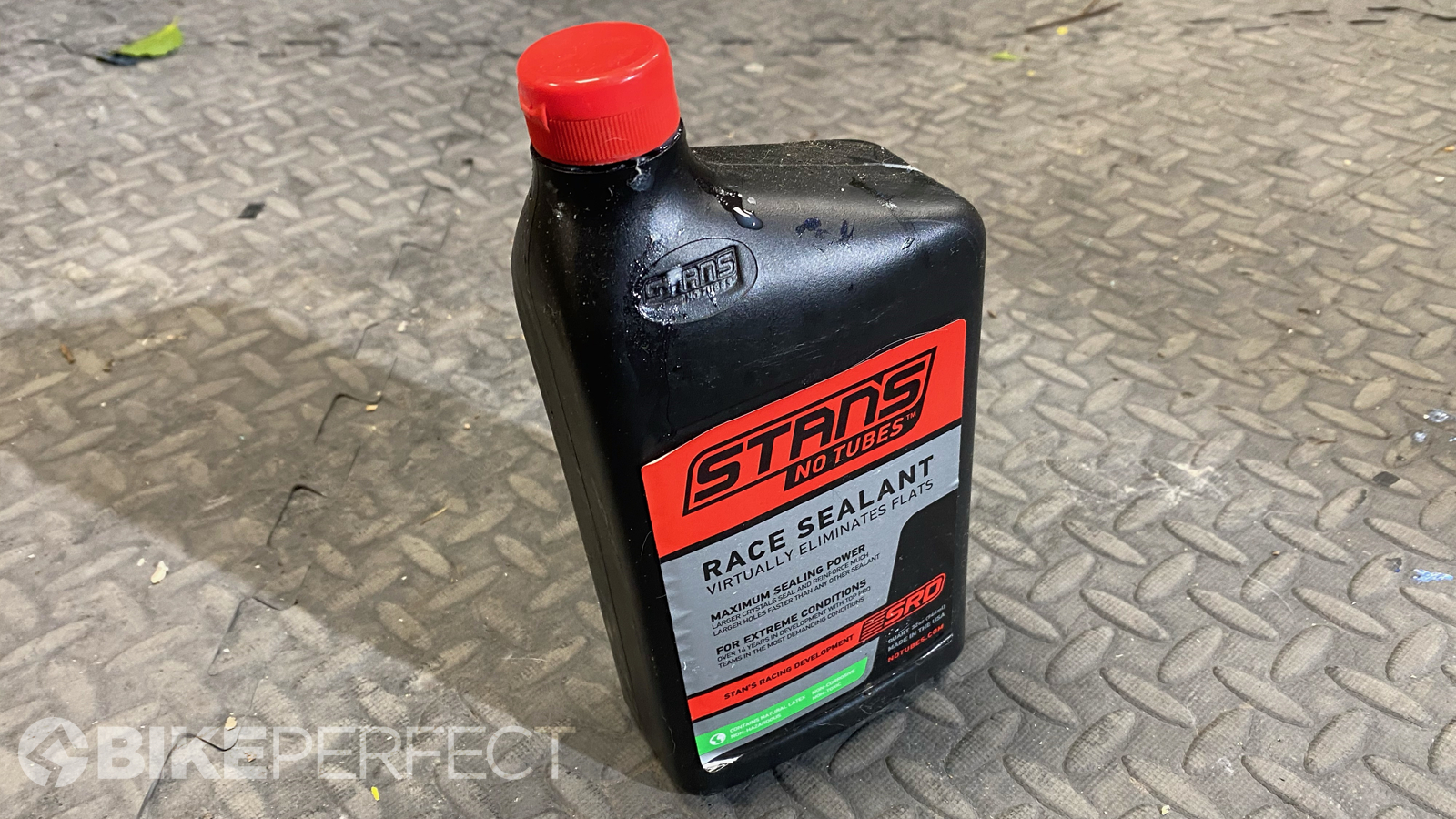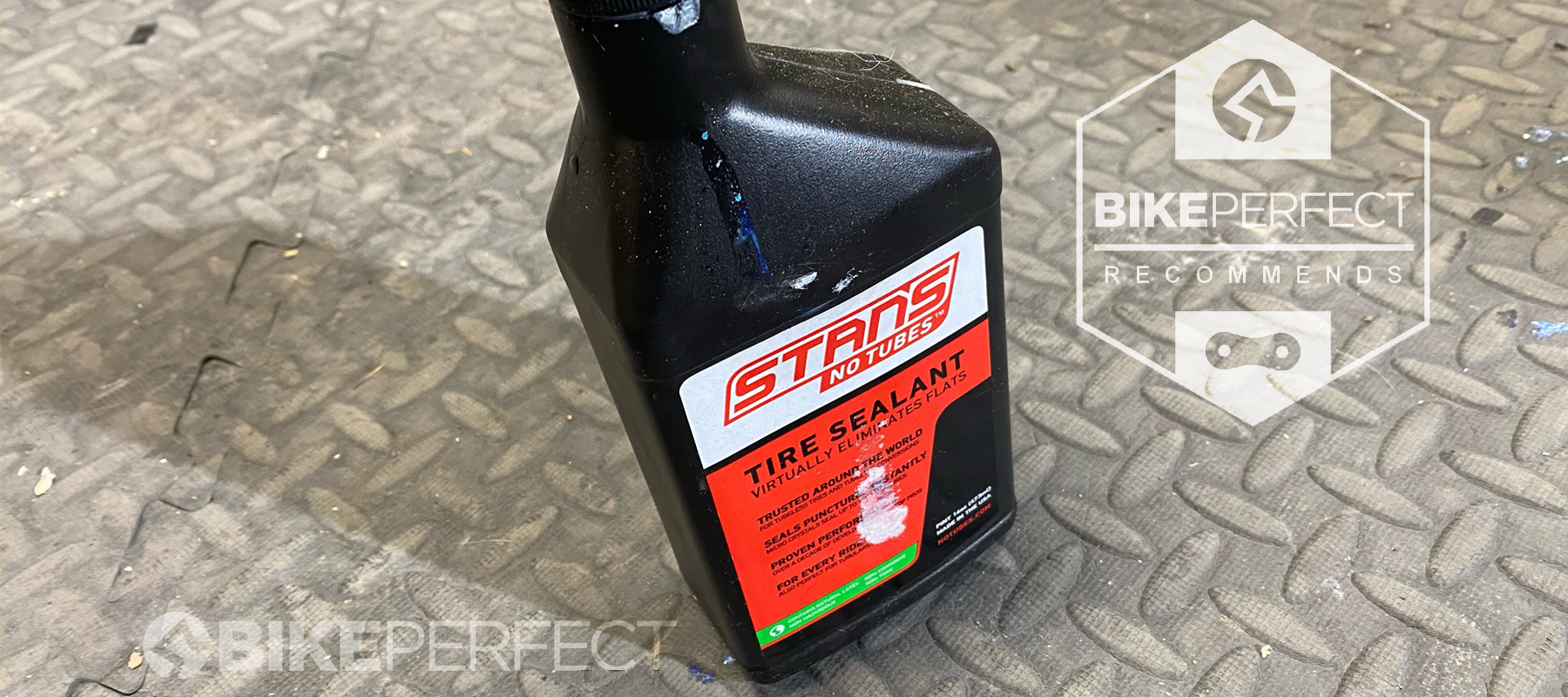Bike Perfect Verdict
Stan’s is the go-to for the riders we know but our results show performance can definitely be variable, especially with the Race mix. It stinks, degrades relatively quickly, and the Race formula is expensive.
Pros
- +
Fast to heal small to medium holes
- +
Minimal pressure loss if well mixed
- +
Standard blend is a fair price
- +
Easy to inject through valves
- +
Not bothered by extreme temperature
Cons
- -
Acrid smell
- -
Needs thorough mixing
- -
Race performance more erratic than standard
- -
Race formula is very expensive
- -
Needs regular checking/replacing
Why trust BikePerfect
While other brands were releasing UST tubeless systems, Stan’s can be credited with killing the inner tube with its retrofit rim-sealing kits and sealants. Its old school mix doesn’t smell great and can ball up over time and our workshop testing showed results can be variable, especially when trying to cope with the biggest holes. It’s still one of the best tubeless tire sealants for mountain bike, gravel and road though, and here's why.
Specification and performance
Stan’s comes in two blends: the original thin and milky No Tubes mix (in small 2oz / 60ml trail bottle or a ‘quart’ / 945ml workshop bottle) and Race (quart only) with bigger crystals to plug bigger holes. Either way, its thin blend makes it easy to push through valves and it swills around and wets a tire bead well for easy inflation. It doesn’t seem to smell as acrid as it used to, though there’s definitely still a whiff of stale tomcat about it. There’s very little carcass cling either so it’s not the best for sealing a porous tire unless you add extra and do a lot of wheel spinning.
The fast-moving liquid means it gets to punctures quickly enough and the bigger crystals in Race can create a super quick heal if you’re lucky. It tends to lose significantly less pressure for a given leak time too so you’re likely to be able to carry on fine or maybe not even notice if you’ve punctured. It isn’t affected by extreme temperatures or CO2 gas blasts either.
By the time we were shanking with the .7 x 2mm screwdriver, it was really struggling to seal consistently without a lot of weeping and then burping open again. Despite our own trail experience and the general feedback from mates and online this was more of an issue with the bigger crystals of Race which shows that just lab testing sealants can’t give you the whole picture. Even after multiple swill-around sessions and even a full re-test with the Race after shaking the bottle senseless to ensure optimum mix, we couldn’t get either sealant to hold reliably enough at that point to make it worth progressing to the biggest screwdriver in our torture chamber.

The variable results to different hole sizes also highlight the more hit or miss nature of using sealants with a thinner, granular mix than a more consistent, thicker blend. It underlines how important that thorough shaking of whatever size container you have is crucial to get reliable results, rather than finding a big layer of particle sludge in the bottom of the bottle and having none in your tires. Long-term use of Stan’s often results in a clumped, granular residue in the tire too so it’s worth checking and potentially scraping out and refreshing on a regular basis. That potentially increases the ongoing cost too and while standard Stan’s is a fair price, Race is definitely on the expensive side.
Verdict
Stan’s can take a bow for getting the whole tubeless revolution rolling and while its sealant didn’t excel in workshop tests we reckon it’s still one of the best around on the trail. It’s stinky though and definitely needs a very thorough mix and a regular check/refresh to get the most consistent results. While we know others who’d strongly disagree, our testing suggests that the very expensive Race blend isn’t significantly better than the standard mix in most situations.
Tech Specs: Stan’s No Tubes sealant
- Price: $3.50 / £4.00 (Standard only), $20.00 / £20.00 (Standard only), $34.00 / £30.00 (Standard only), $44.00 / £40.00 (Race)
- Sizes: 60ml (Standard only), 473ml (Standard only), 945ml (Standard and Race)

Guy Kesteven has been working on Bike Perfect since its launch in 2019. He started writing and testing for bike mags in 1996. Since then he’s written several million words about several thousand test bikes and a ridiculous amount of riding gear. He’s also penned a handful of bike-related books and he reviews MTBs over on YouTube.
Current rides: Cervelo ZFS-5, Specialized Chisel, custom Nicolai enduro tandem, Landescape/Swallow custom gravel tandem
Height: 180cm
Weight: 69kg

